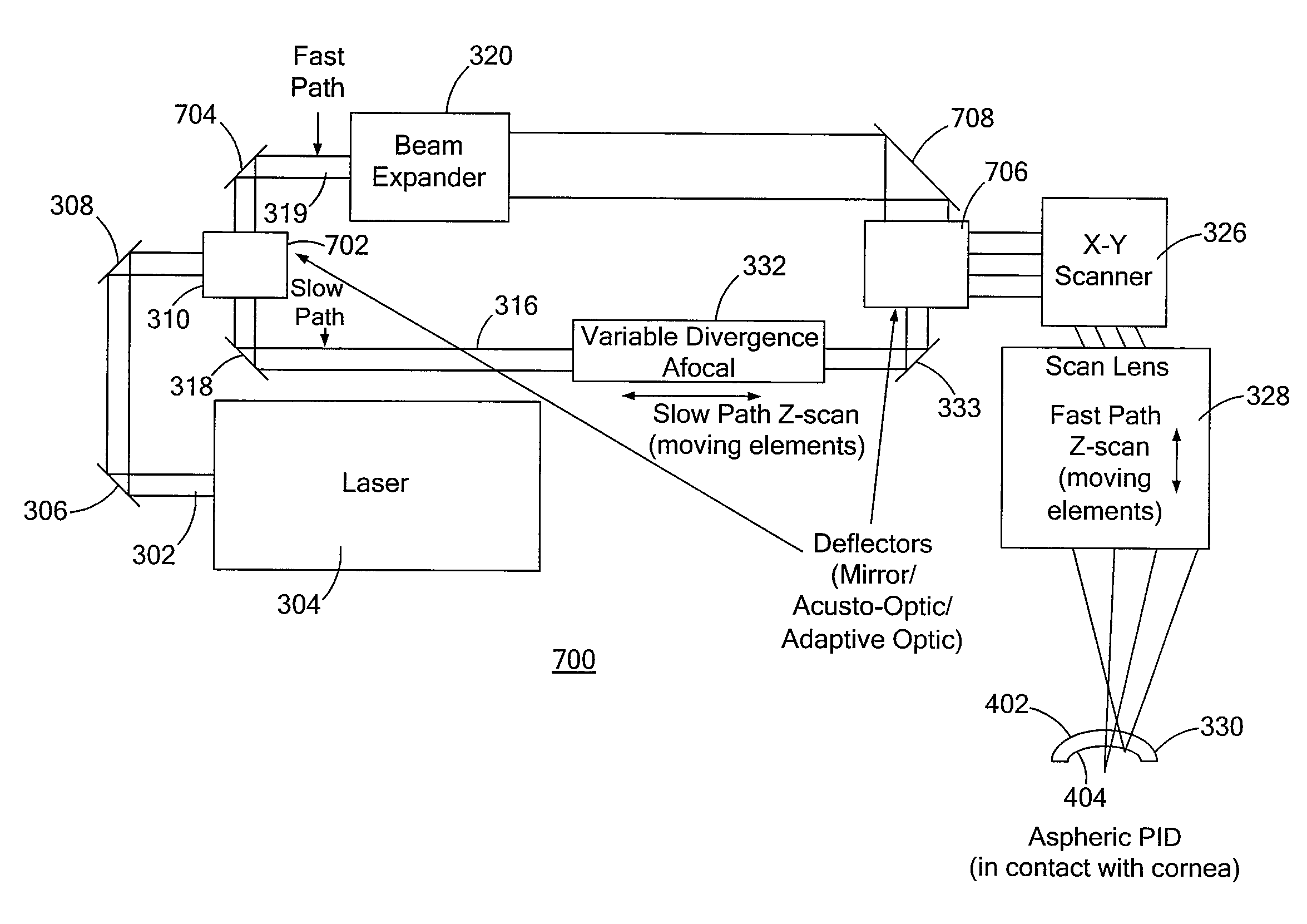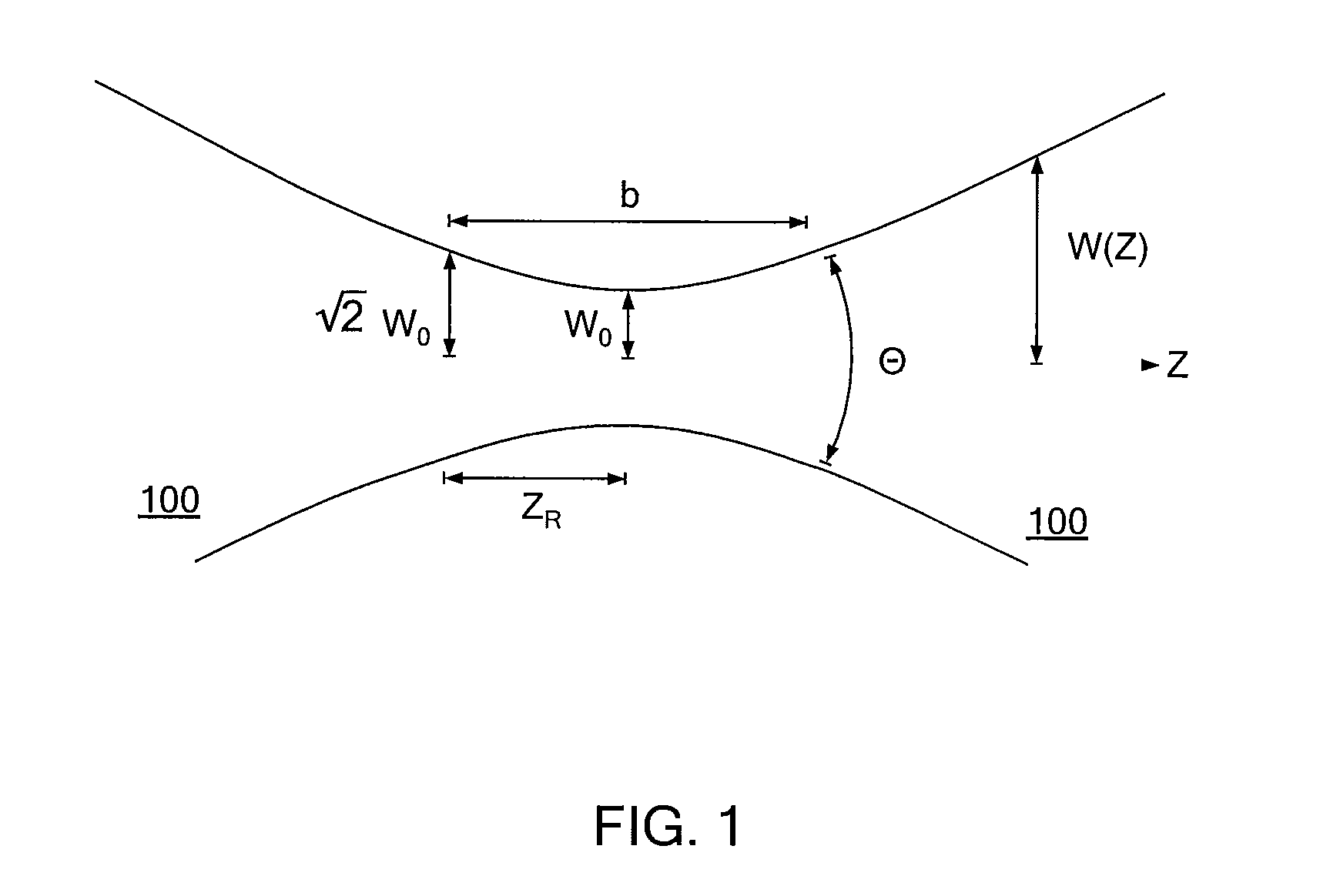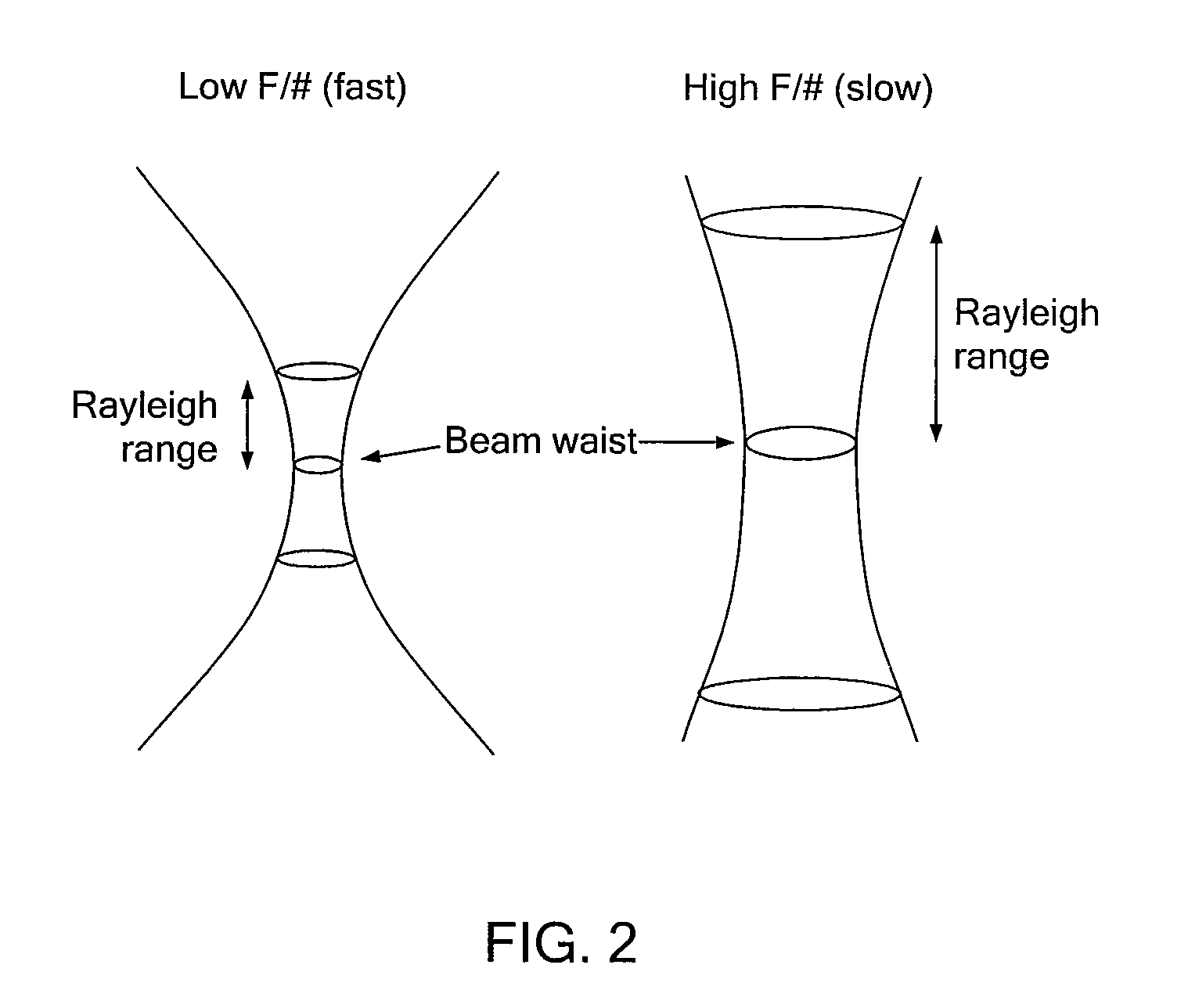System and method for laser generated corneal and crystalline lens incisions using a variable f/# optical system with aspheric contact interface to the cornea or rotating and adaptive optics
a technology of variable f/# and optical system, which is applied in the field of system and method of laser generated corneal and crystalline lens incisions, can solve the problems of difficult design of optical system capable of focusing beam over a large three-dimensional area, high cost, and high cost, and achieves significant flexibility, reduces the complexity of optics, and reduces the number of moving elements.
- Summary
- Abstract
- Description
- Claims
- Application Information
AI Technical Summary
Benefits of technology
Problems solved by technology
Method used
Image
Examples
Embodiment Construction
[0046]Note that in order to understand some of the properties of the present invention, FIG. 1 is presented which schematically shows a beam, such as a Gaussian beam 100. The beam waist Wo and Rayleigh range ZR are two key parameters that determine how localized the photodisruption and additional thermal effects will be around the focal point of the beam. The beam waist is directly proportional to the beam F / #, so the peak spatial irradiance at the waist is inversely proportional to the square of the F / #. The Rayleigh range of a Gaussian beam is defined as the distance along the laser beam (Z-axis) from the beam waist to the point where the beam expands by sqrt(2), and is directly proportional to the square of the beam waist. Therefore, the Rayleigh range is inversely proportional to the square of the F / #. Note that at one Rayleigh range away from the waist, the peak irradiance will drop in half compared to the peak irradiance at the waist. With the above said, the Rayleigh range an...
PUM
 Login to View More
Login to View More Abstract
Description
Claims
Application Information
 Login to View More
Login to View More - R&D
- Intellectual Property
- Life Sciences
- Materials
- Tech Scout
- Unparalleled Data Quality
- Higher Quality Content
- 60% Fewer Hallucinations
Browse by: Latest US Patents, China's latest patents, Technical Efficacy Thesaurus, Application Domain, Technology Topic, Popular Technical Reports.
© 2025 PatSnap. All rights reserved.Legal|Privacy policy|Modern Slavery Act Transparency Statement|Sitemap|About US| Contact US: help@patsnap.com



